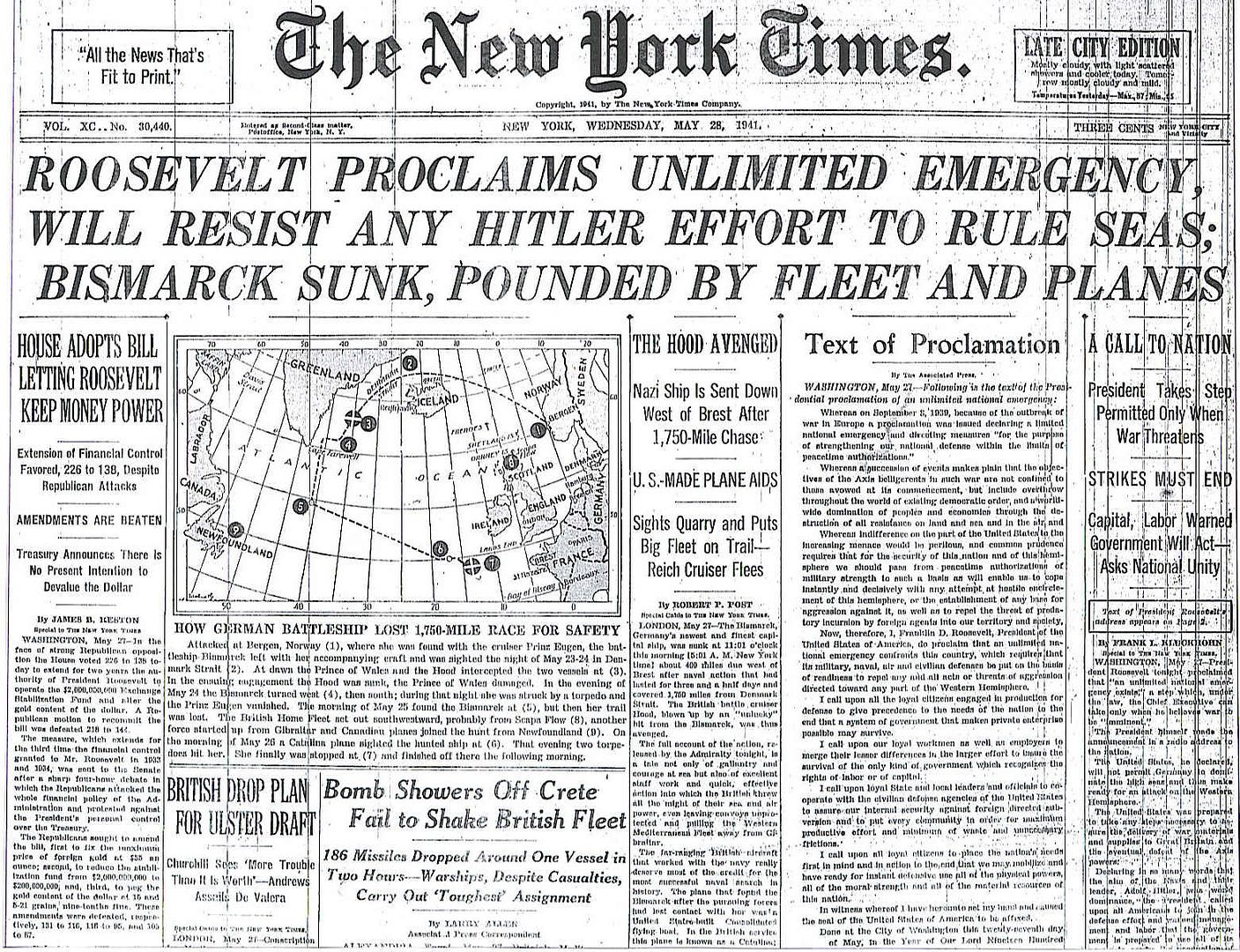
Posted on 05/28/2011 5:32:36 AM PDT by Homer_J_Simpson


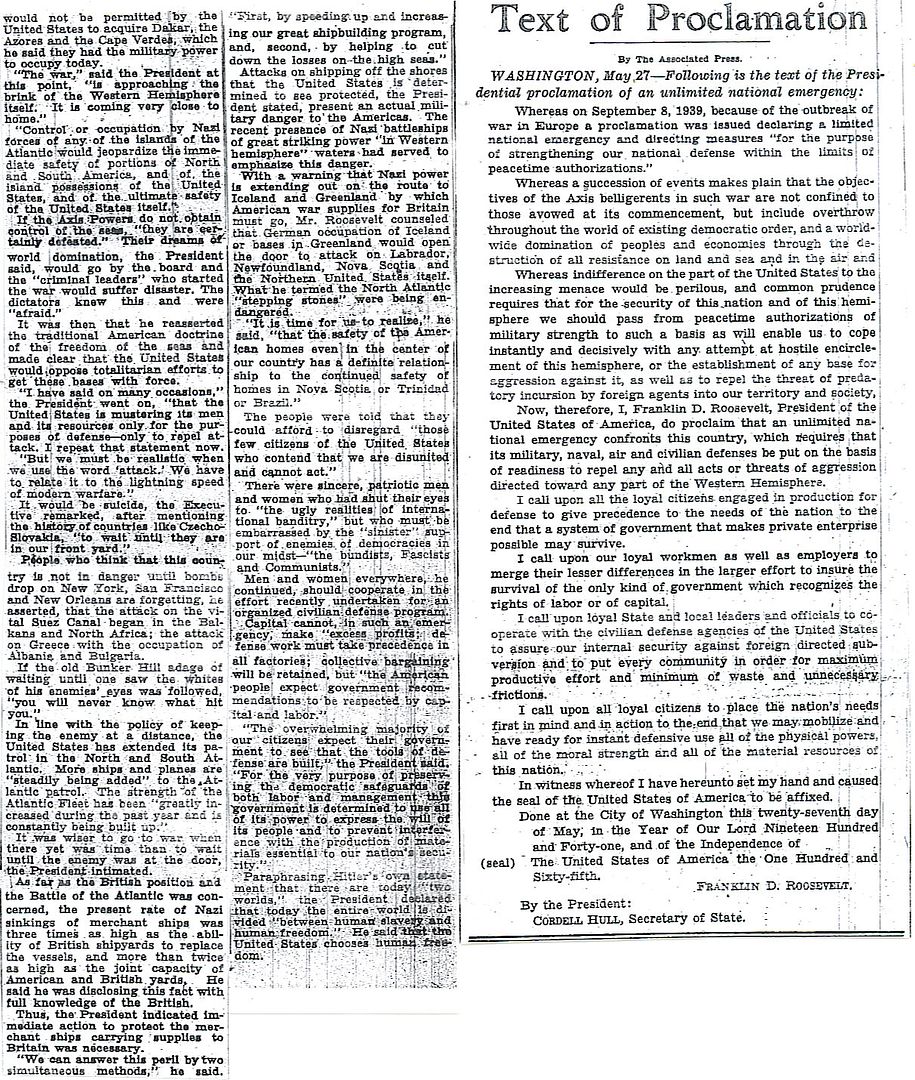
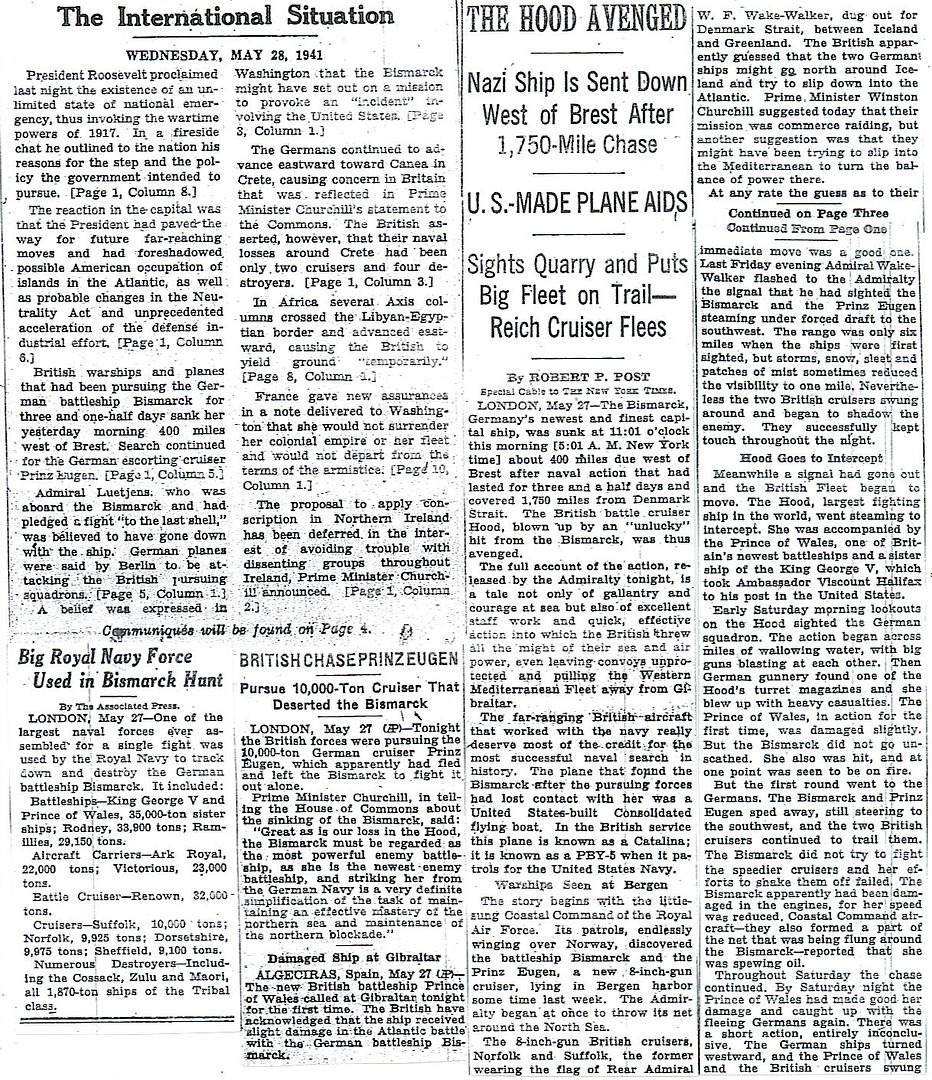
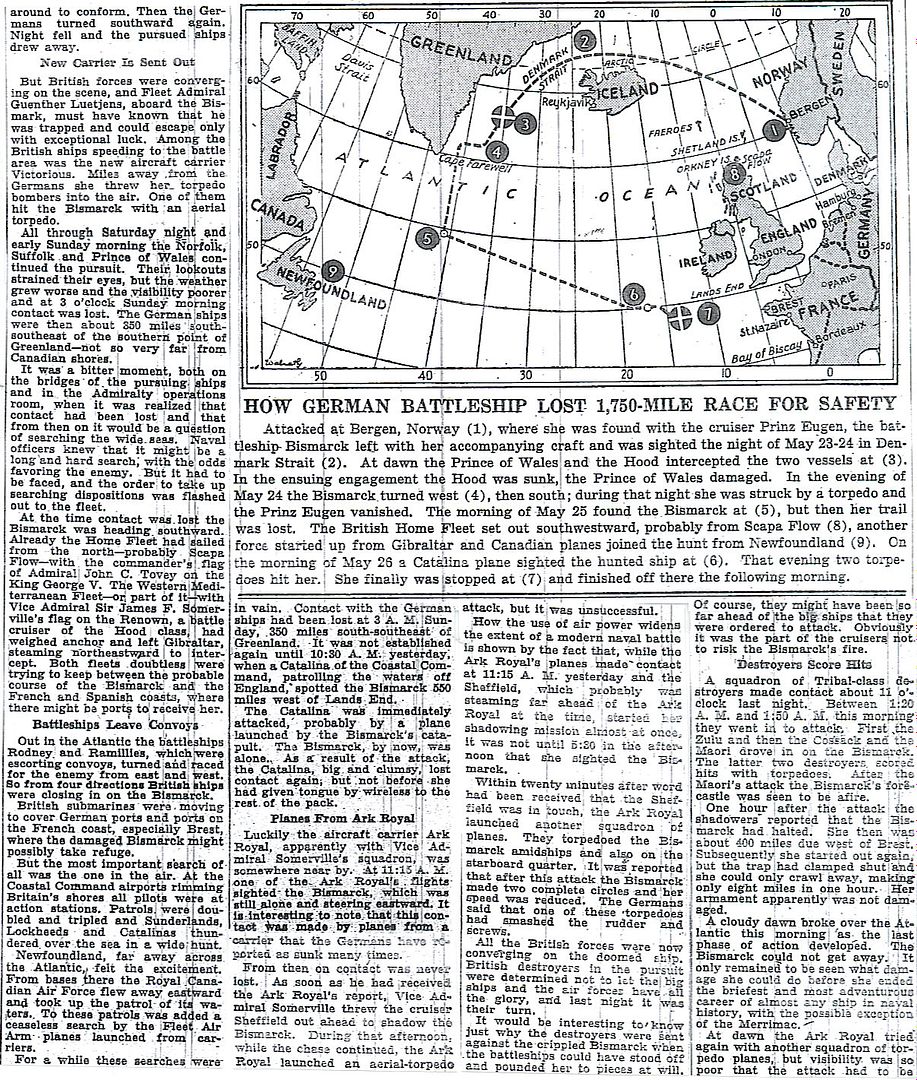
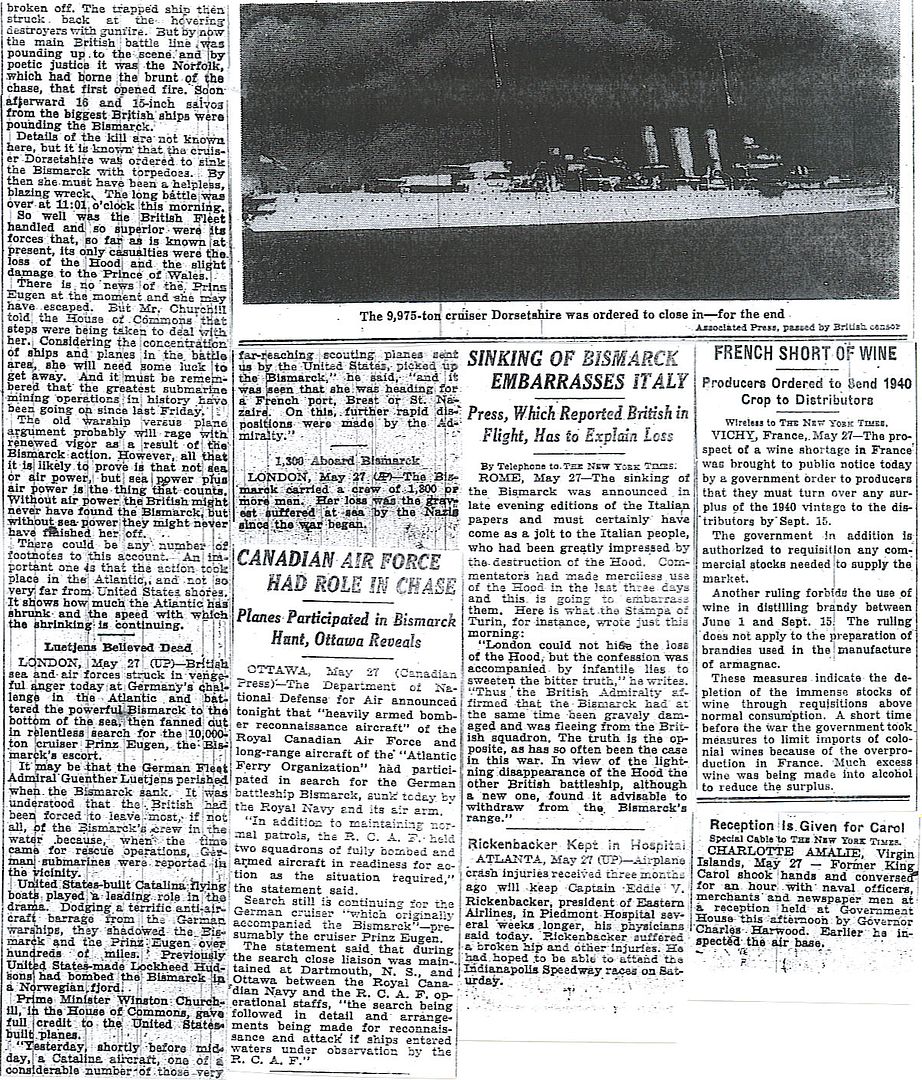

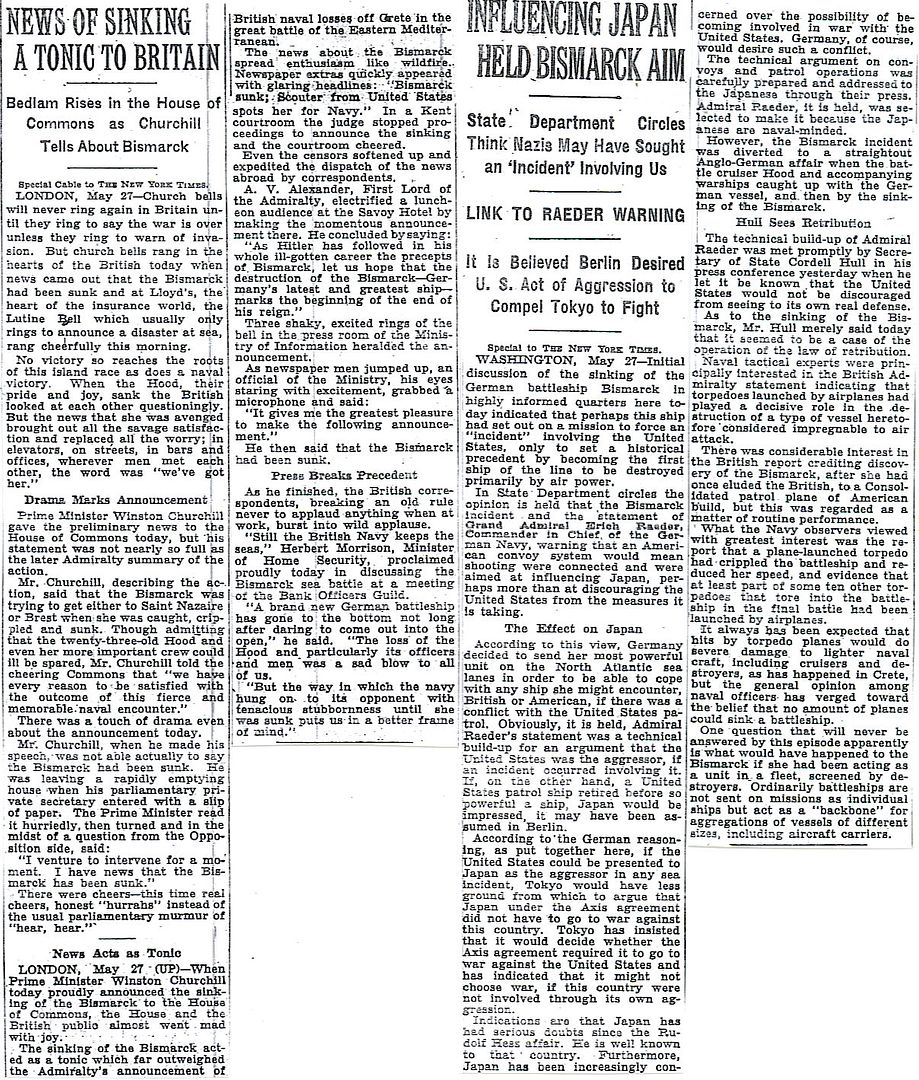
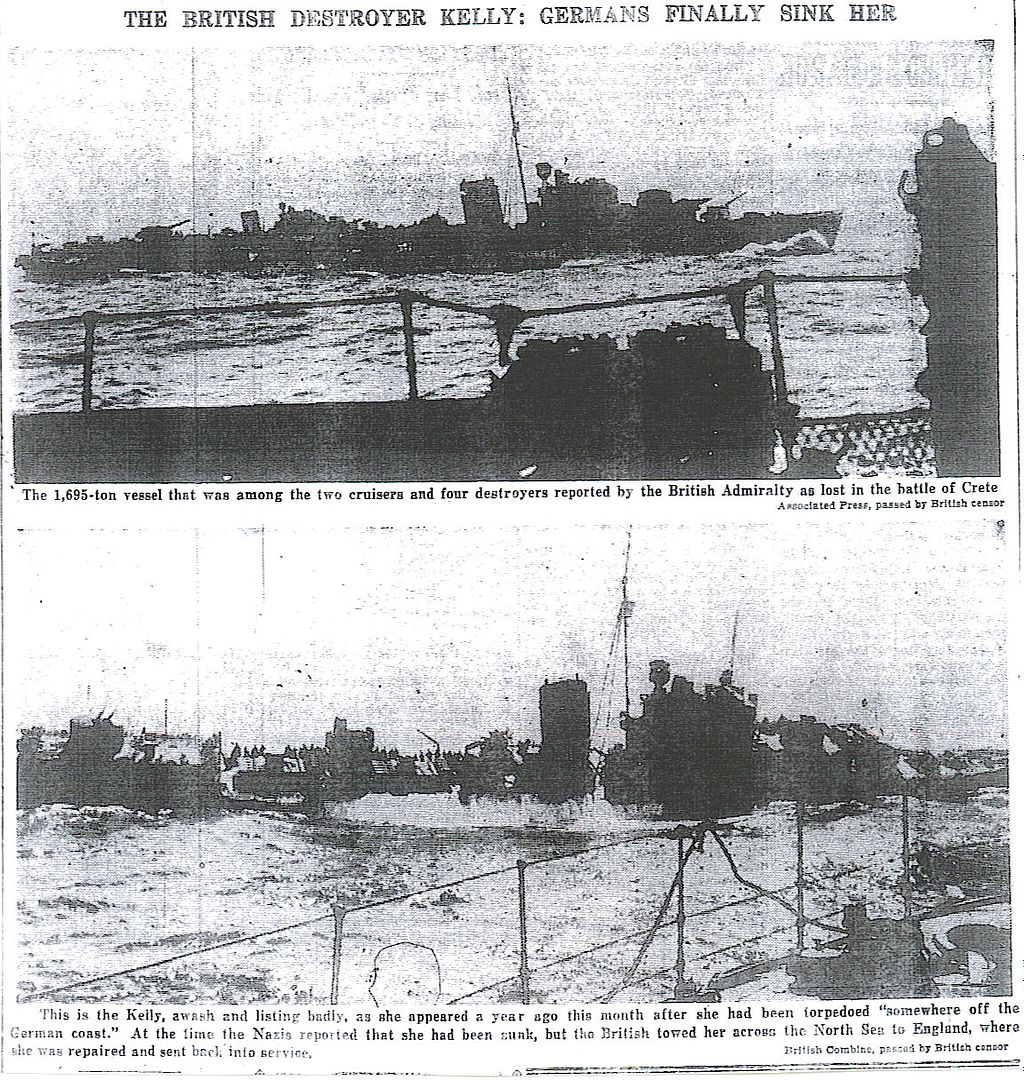
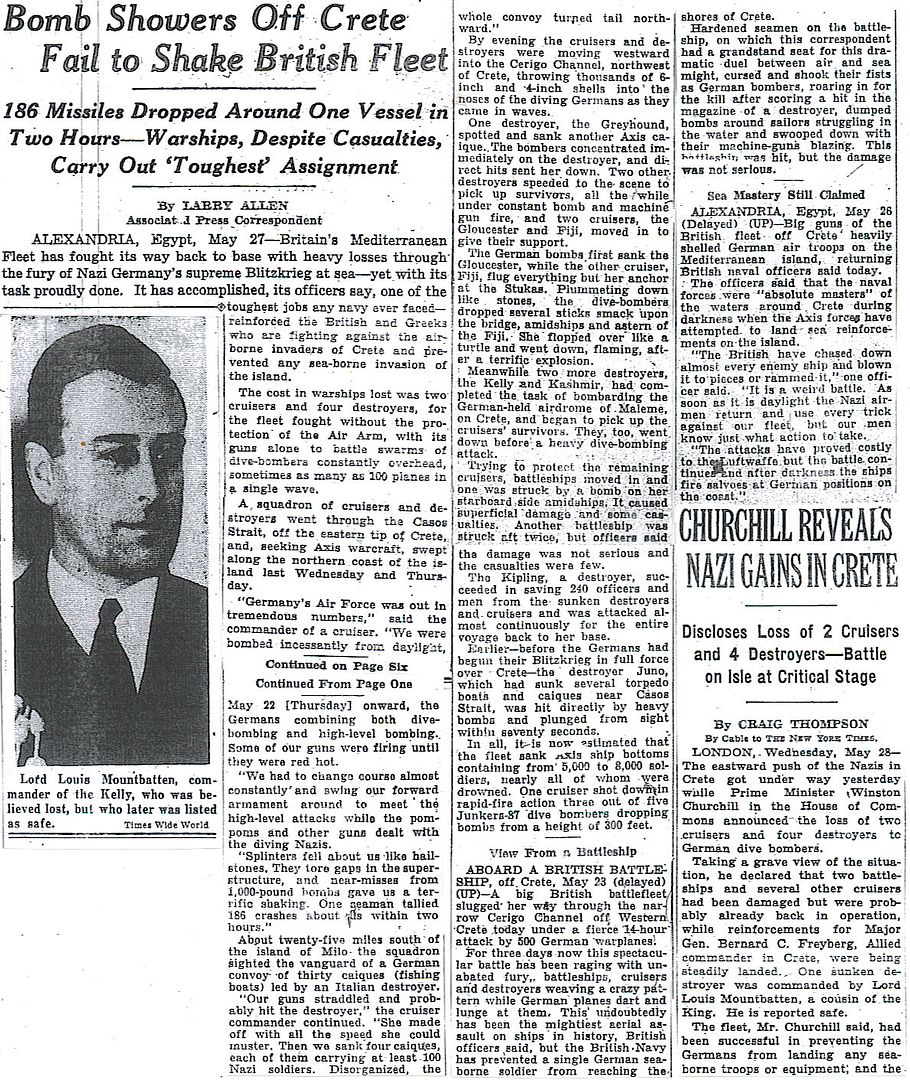
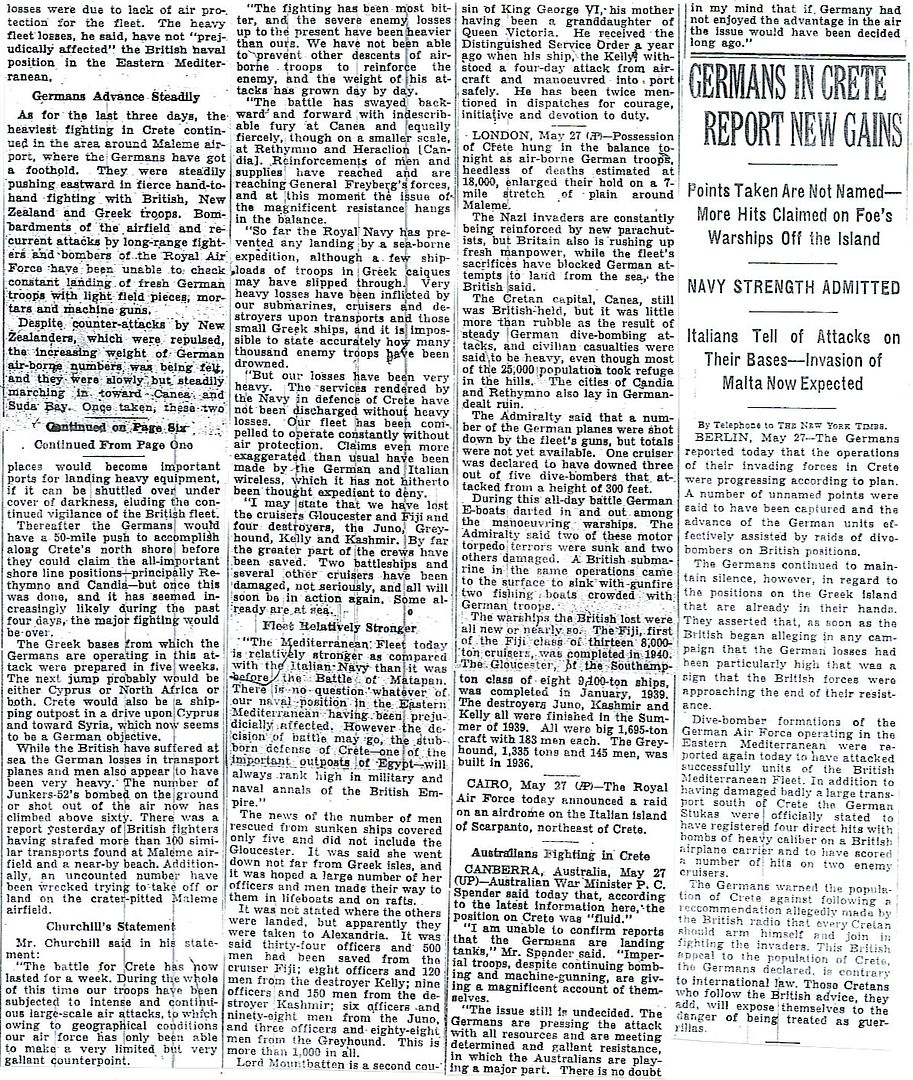
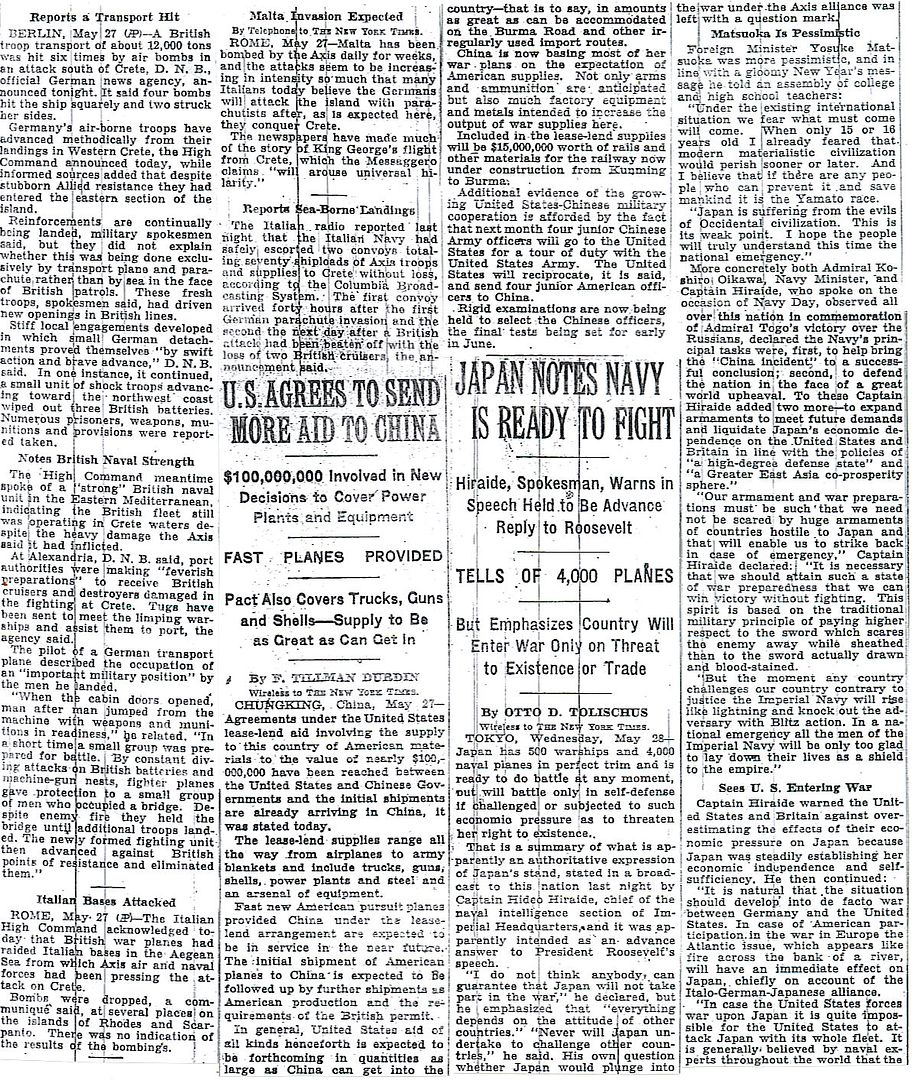
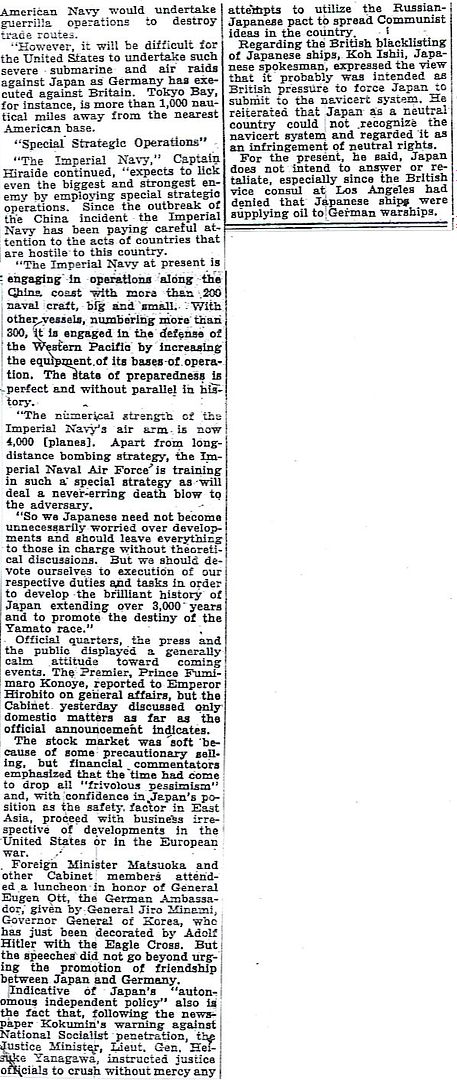
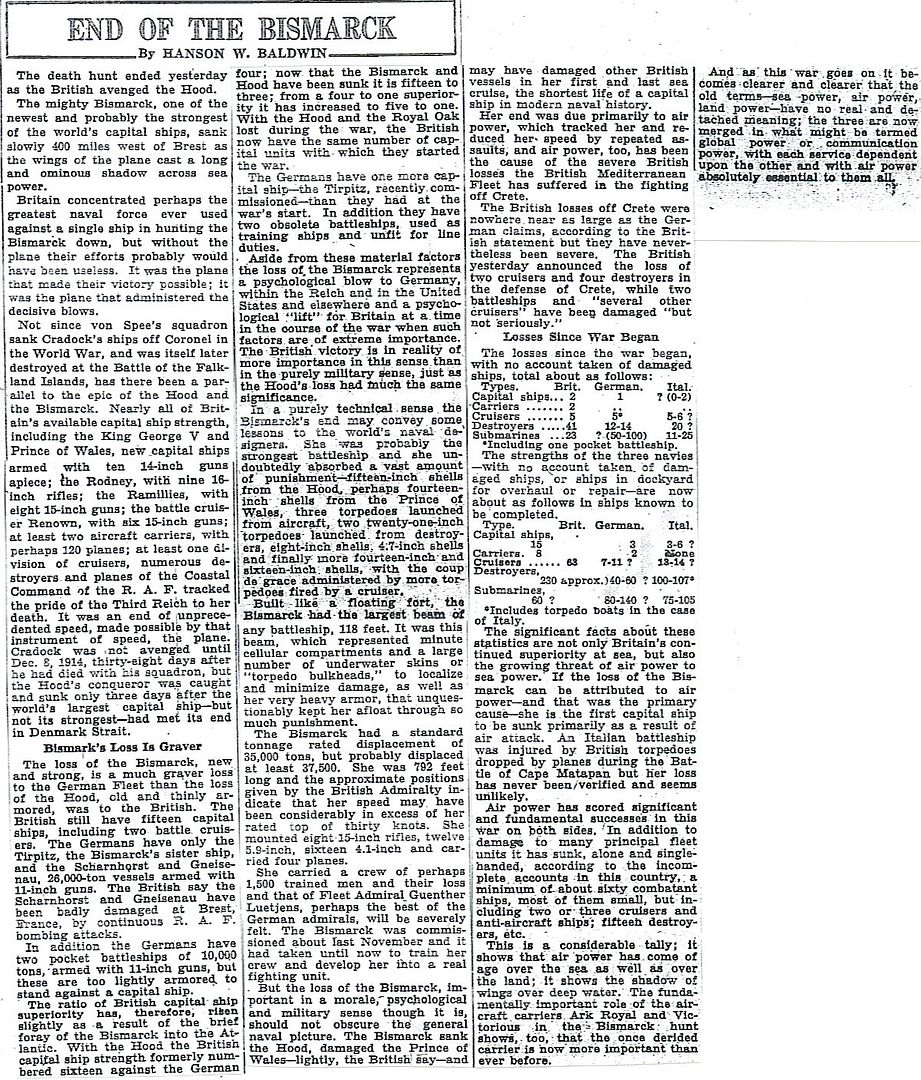
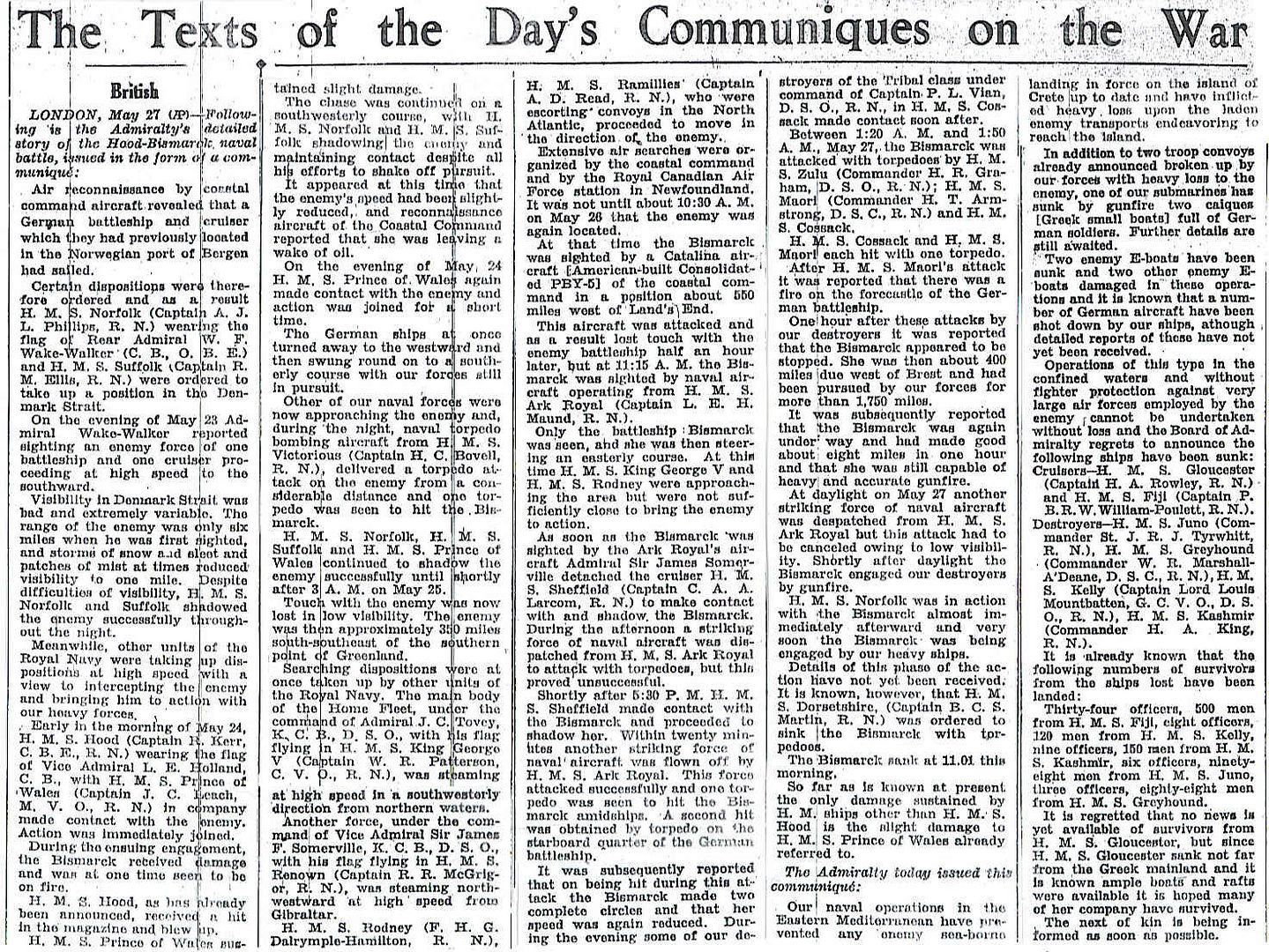
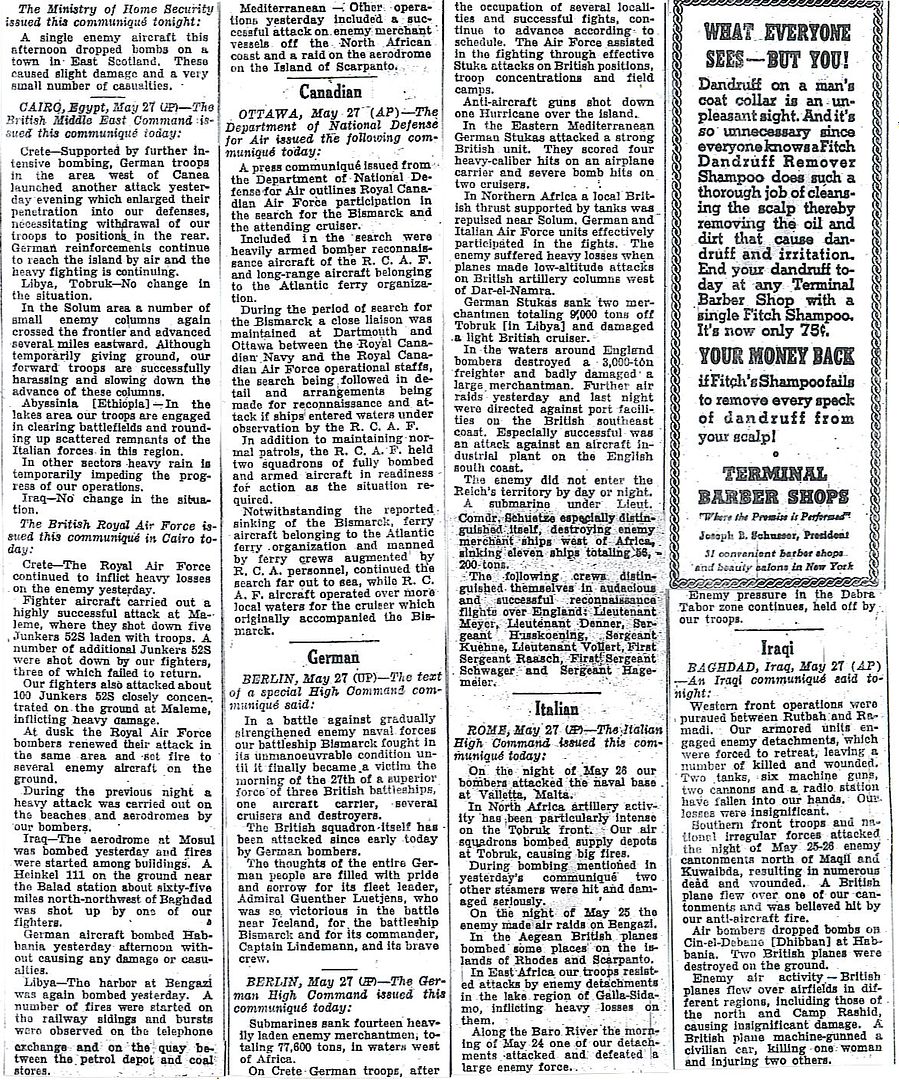
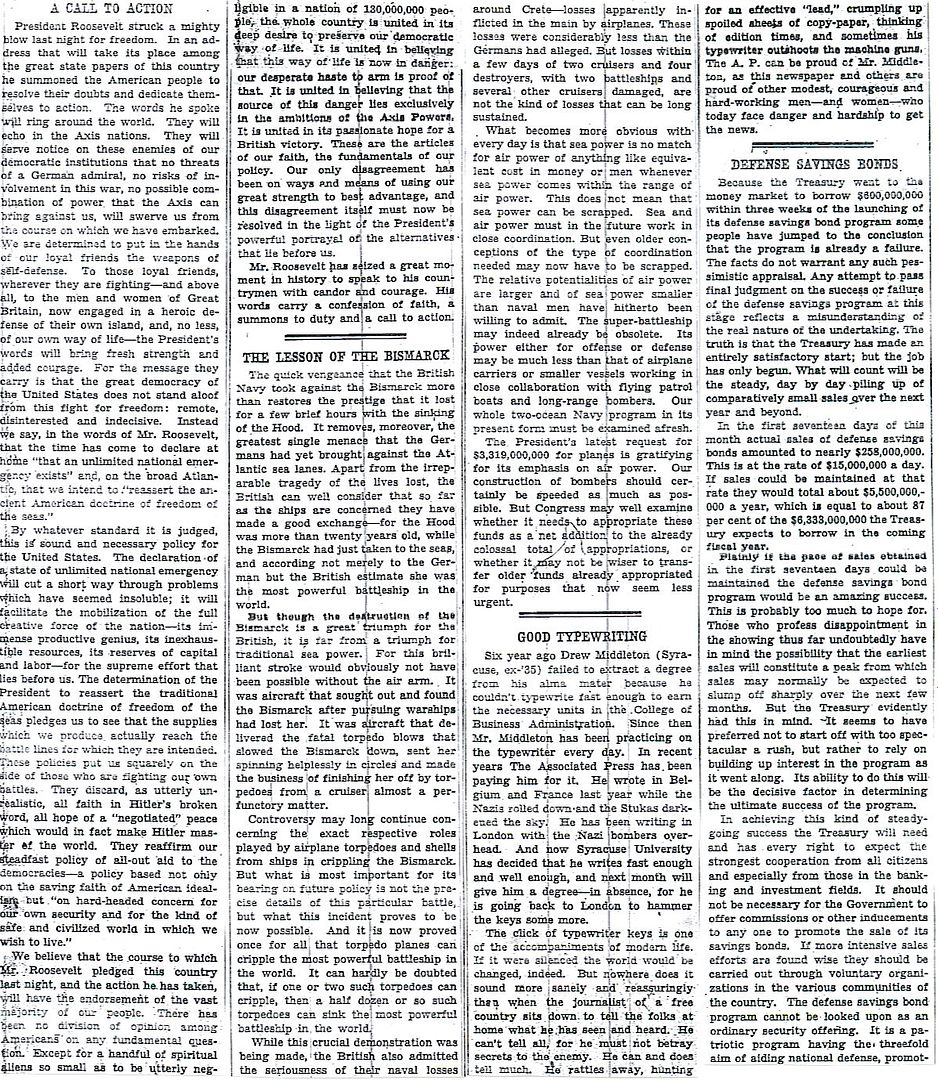
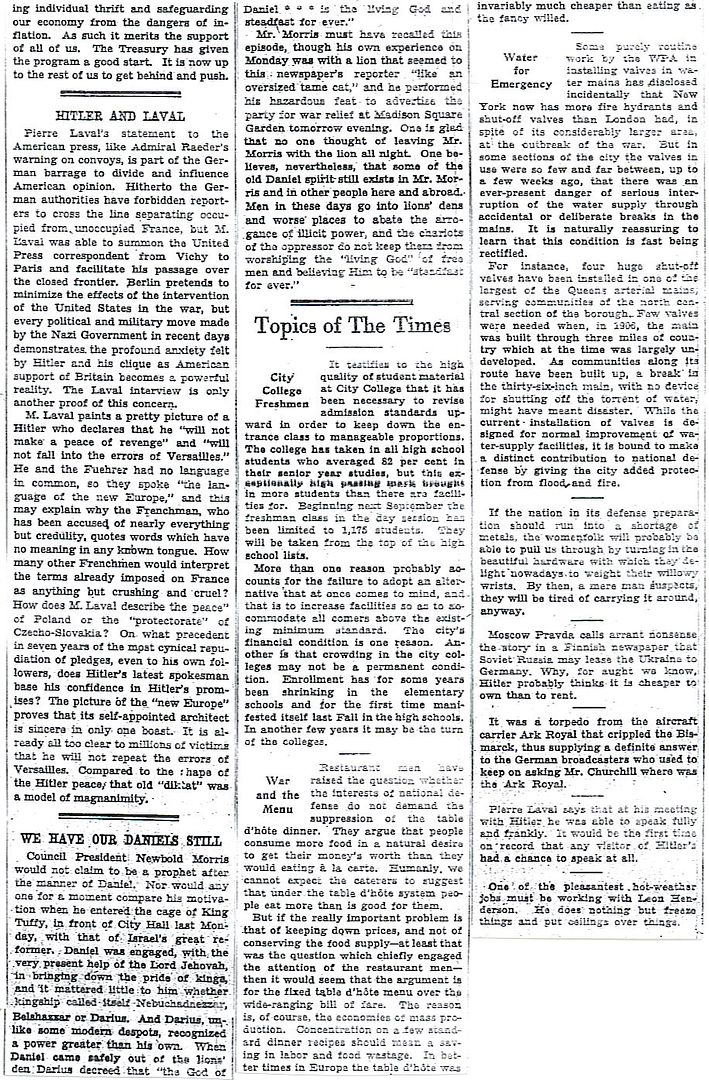
Editorials – 17-18
A Call to Action
The Lesson of the Bismarck
Good Typewriting
Defense Savings Bonds
Hitler and Laval
We Have Our Daniels Still
Topics of the Time
http://www.onwar.com/chrono/1941/may41/f28may41.htm
Allied troops advancing in Iraq
Wednesday, May 28, 1941 www.onwar.com
In Iraq... The Allied forces occupy Ur. The 20th Indian Brigade has made this advance from Basra but can go no further for the moment because repairs to roads and railroad tracks are needed.
In the Mediterranean... On Crete, the Allied forces fight some small, rearguard actions to cover their retreat to the evacuation beaches at Sfakia. On the night of May 28-29th, the Heraklion garrison of 4000 men is taken off by a force of cruisers and destroyers. These ships are heavily attacked while withdrawing. Two destroyers are sunk and the two cruisers involved are hit.
http://homepage.ntlworld.com/andrew.etherington/month/thismonth/28.htm
May 28th, 1941
UNITED KINGDOM:
Destroyer ORP Krakowiak (ex-HMS Silverton) commissioned.
Destroyer HMS Lightning commissioned.
Destroyer HMS Panther launched.
Corvette HMS Cowslip launched.
Minesweeping trawler HMS Professor launched.
Corvette FS Roselys (ex-HMS Sundew) launched. (Dave Shirlaw)
GERMANY:
U-183 laid down.
U-579, U-580 launched. (Dave Shirlaw)
GREECE: CRETE: Sgt Alfred Clive Hulme (1911-82), 2nd New Zealand Expeditionary Force, showed amazing courage many times from 20-28 May, once silencing a mortar and three snipers. (VC)
The decision to evacuate has been made and cruisers and destroyers prepare to lift off the troops. As they approach, HMS Ajax and destroyer HMS Imperial are damaged to the southeast.
EGYPT: Cairo: Wavell to CIGS:
All available armoured strength, which will be deciding factor, is being put into “Battleaxe.” Various difficulties are delaying reconstitution 7th Armoured Division. Earliest date for beginning of forward move from Matruh will be June 7, and may be later.
2. I think it right to inform you that the measure of success which will attend this operation is in my opinion doubtful. I hope that it will succeed in driving enemy west of Tobruk and re-establishing land communications with Tobruk. If possible we will exploit success further. But recent operations have disclosed some disquieting features. Our armoured cars are too lightly armoured to resist the fire of enemy fighter aircraft and, having no gun, are powerless against the German eight-wheeled armoured cars, which have guns and are faster. This make reconnaissance difficult.
SYRIA: The Vichy French won their first air victory when Lt. Vuillemin of 7 Squadron. 1st Fighter Group (GCI/7), shot down an RAF Blenheim reconnaissance plane, while he was flying a Morane 406.
Reinforcements also arrive for the French in the form of Dewoitine D.520s, France’s most modern fighter. 6 Squadron, 3rd Fighter Group (GCIII/6) lands at Rayak after a journey from Algeria which began on May 24 and skirted the northern coast of the Mediterranean; 2 of the planes were lost over Turkey.
IRAQ: The Allies, 20th Indian Brigade capture Ur.
CANADA:
Minesweeper HMCS Kelowna launched Prince Rupert BC
Minesweeper HMCS Guysborough laid down North Vancouver BC
U.S.A.: Washington: Roosevelt makes a speech warning of Hitler attempting world domination and directly threatening the United States: “... the Azores and the Cape Verde Islands, if occupied or controlled by Germany, would directly endanger the freedom of the Atlantic and our own physical safety. Under German domination they would become bases for submarines, warships and airplanes raiding the waters which lie immediately off our own coasts and attacking the shipping in the South Atlantic. They would provide a springboard for actual attack against the integrity and independence of Brazil and her neighbouring republics.”
Hamilton Fish in the House of Representatives naval affairs committee says that the British have thus far filed 132 requests with the US government for permission to put warcraft into American ports in order to repair damages incurred in naval engagements.
ATLANTIC OCEAN: The many warships deployed from all parts of the North Atlantic to hunt the BISMARK, return to other duties. As they do, heavy attacks by German He 111 aircraft sink destroyer HMS Mashona off the west coast of Ireland when a bomb is dropped that penetrates No. 1 boiler room. However the forward bulkhead is riddled with shell splinter holes and as such she takes in water, eventually rolling on her side and is abandoned 100 miles west of Ireland at 52 58N 11 36W. There are 46 casualties. The survivors are picked up by HMS Tartar which attempts to sink the hull with a torpedo, but when this failed, it was sent to the bottom by gunfire from HMCS St Croix and Sherwood. (Alex Gordon)(108)
At 1452, the unescorted Papalemos was hit on the port side in the stern by one torpedo from U-107. The explosion destroyed large parts of the superstructure and a lifeboat. After the crew had abandoned ship in two lifeboats the sinking was accelerated with shots from the AA guns into the waterline at 1600. The U-boat went to the lifeboats for questioning, took care of three wounded survivors and provided them cigarettes, chocolate and provisions before leaving the area on a deception course. (Dave Shirlaw)
Two off topic interesting articles in that paper are, first, on page one the far left column about the continued extension of presidential powers, and, second, on page 12 about $100,000,000 in foreign aid to China for development of power infrastructure.
In his wrapup of the Bismarck sinking, Hanson W. Baldwin mentions the WW1 Battle of Coronel, the Battle of the Falkland Islands and Maximilian von Spee.
A very interesting naval warfare episode.
http://en.wikipedia.org/wiki/Battle_of_Coronel
http://en.wikipedia.org/wiki/Battle_of_the_Falkland_Islands
Boy, that's a lot of money. I didn't know they were providing lease-lend (I wonder when they stared calling it lend-lease. Maybe when it became obvious no lease payments would be forthcoming.) to China this early, thinking it was all going to shore up Britain at home and in North Africa. If Roosevelt's not careful he could get us in a war with both Germany and Japan.
ping
China was always in the administration’s mind with the Lend-Lease Bill. This is one of the reasons the bill itself does not name any specific countries for aid. It allowed it to be open ended for any country that was opposing the Axis powers which would includ China’s opposition of Japan.
From what I know, this 100 million dollars was actually approved before Lend-Lease was law (the first half of it anyway), unless this is another 100 million, but I doubt it.
T.V. Soong had been negotiating for funds from the United States on behalf of the Nationalists and Chaing Kai-shek since last summer. By October 22nd, he had negotiated a deal for a loan to the Nationalists for 25 million.
Soong used the Japanese support of Wang Jingwei to press Secretary of the Navy Knox to support him on an aid proposal. They convinced Secretary Hull to ask Roosevelt to support China’s requests.
This resulted in the 100 million aid package with the first half of it approved on February 2nd, 1941. This 50 million would be more of a trade package than a loan with the amount being being returned to the United States in the form of tin and tungsten. The second half was approved on April 25th which was set up as the Sino-American Stabilization Fund designed to stabilize the Nationalist Chinese currency.
Also, by this time Clair Chennault is already working on getting and American supported air force in China to take on the Japanese. Back in November, Soong and Chennault drafted a proposal calling for the creation of a 500 bomber force piloted and supported by Americans to make strategic strikes on Japanese positions. This proposal would fall through because of the priority of fulfilling Britain’s air power needs. Chief of Staff Marshall did approve the sending of 100 P-40s to China as a compromise. The group this will create will be known as the American Volunteer Group or “Flying Tigers. They wont have the details for this or the pilots all signed until September and they wont see action until after Pearl Harbor.
http://www.naval-history.net/xGM-Chrono-01BB-KGV.htm
SERVICE HISTORIES of ROYAL NAVY WARSHIPS in WORLD WAR 2
by Lt Cdr Geoffrey B Mason RN (Rtd) (c) 2003
HMS KING GEORGE V - King George V-class 14in gun Battleship
including Convoy Escort Movements
After action movements.
27th - Took passage to Loch Ewe to refuel. (Note: Contingency plan to obtain fuel at a port in the Irish Republic was not implemented. The short endurance of. this Class of battleship was thus firmly confirmed as a basic design weakness and despite modifications to carry an additional 250 tons of fuel was always a limiting factor.)
28th - Refuelled at Loch Ewe and took passage to Scapa Flow. (Note: No air or submarine attacks were made during passage, to Loch Ewe. During heavy air attacks on destroyers ASHANTI and TARTAR, proceeding independently, MASHONA was sunk.).
29th - Resumed Home Fleet Flagship duties at Scapa Flow.
http://worldwar2daybyday.blogspot.com/
Day 636 May 28, 1941
Crete. Overnight, Allied troops retreat South from Canae and Suda Bay to evacuate from Sphakia on the South side of the island, while Colonel Laycock’s commandos fight a rearguard action. At dawn near Stylos on the route to Sphakia, ANZAC troops ambush German 85th Mountain Regiment, ending a week of bravery that wins the VC for Sergeant Clive Hulme, New Zealand 2nd Division. Evacuation of Crete begins. British cruisers HMS Ajax, Orion & Dido and destroyers HMS Decoy, Jackal, Imperial, Hotspur, Kimberly & Hereward leave Alexandria, Egypt, to evacuate troops from Heraklion. German bombing damages HMS Ajax (turns back with 6 killed, 18 wounded) and HMS Imperial (1 wounded). They reach Heraklion at 11.30 PM and embark all 3,486 troops there by 2.45 AM next morning. Simultaneously, destroyers HMS Napier, Nizam, Kelvin & Kandahar (from Alexandria) embark 608 troops at Sphakia, bringing food and water for the large numbers expected to arrive.
Low on fuel after the hunt for Bismarck, British destroyers HMS Tartar and HMS Mashona return slowly to Scapa Flow, Scotland. In the morning 100 miles West of Ireland, they are attacked by German Focke-Wulf bombers. A bomb penetrates Mashona’s deck near the funnel and explodes in the boiler room, blowing a hole in her side underwater (36 killed). Mashona capsizes within an hour but does not sink and Tartar rescues 184 survivors. Destroyers HMS Sherwood and HMCS St. Clair sink Mashona with shellfire.
Iraq. Indian troops continue advancing on the capital, Baghdad, from Basra. 20th Indian Brigade reaches the ancient city of Ur on the Euphrates, 110 miles from Basra.
At 4 PM off Sierra Leone, U-107 sinks Greek SS Papalemos with a torpedo and the anti-aircraft gun (2 killed). 27 crew abandon ship in 2 lifeboats.
Disclaimer: Opinions posted on Free Republic are those of the individual posters and do not necessarily represent the opinion of Free Republic or its management. All materials posted herein are protected by copyright law and the exemption for fair use of copyrighted works.